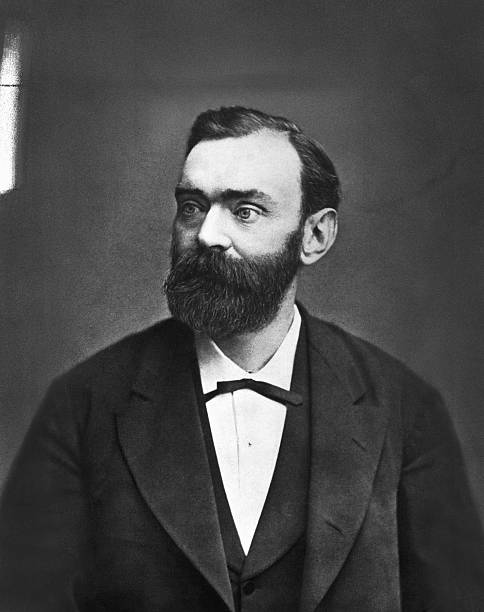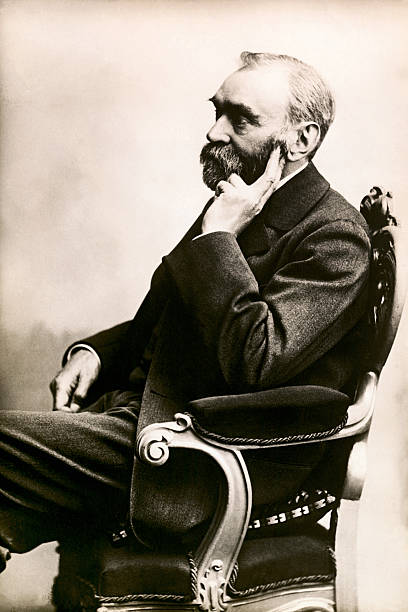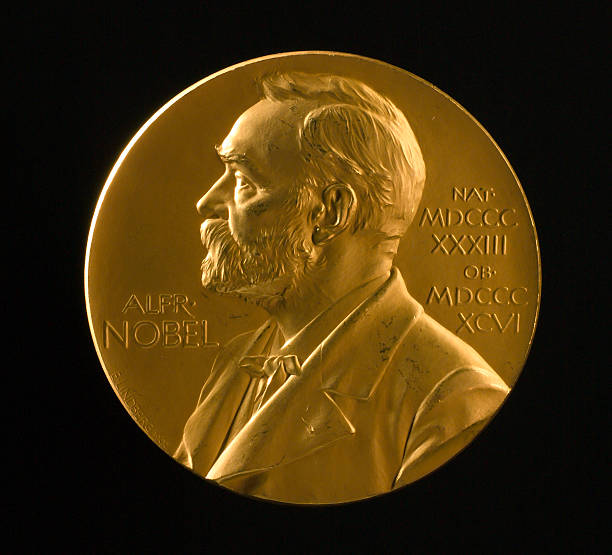Alfred Nobel Net Worth: $300 million
| Name: | Alfred Nobel |
| Net Worth: | $300 million |
| Monthly Salary: | $2 million+ |
| Annual Income: | $20 Million+ |
| Source of Wealth: | Chemist, engineer, inventor, businessman |
Alfred Nobel net worth was $300 million at death. Alfred Nobel was a Swedish chemist who invented dynamite and other explosives.

Nobel used his huge wealth from 355 patents to establish the Nobel Prizes. The majority of his income came from his career as a chemist, engineer, inventor and businessman.
Alfred Nobel worked at his father’s arms factory in Sweden. Alfred experimented with chemistry and explosives because he was intellectually curious. A deadly explosion killed his younger brother in 1864. Alfred was deeply affected and developed dynamite, a safer explosive. Nobel used his vast fortune to establish the Nobel Prizes, which have come to be known for awarding the world’s greatest achievements.
Alfred Nobel Net Worth at Death
Alfred Nobel’s net worth at the time of his death is around $300 million. In his lifetime, Alfred Nobel had over 350 patents internationally and established several weaponry factories. Alfred Nobel is also known for inventing dynamite and other various kinds of explosives.
His vast fortune from his business and hundreds of patents was used to establish and create the fund for Nobel prizes after his death. It was in his last will to use his wealth for the foundation of the Nobel. He signed it in Paris on November 27, 1895. Moreover, it was specified that there should be five categories – physics, chemistry, physiology or medicine, literature and peace.
Alfred Nobel Biography:
| Born | Alfred Bernhard Nobel 21 October 1833 Stockholm, Sweden |
|---|---|
| Died | 10 December 1896 (aged 63) Sanremo, Liguria, Italy |
| Resting place | Norra begravningsplatsen, Stockholm, Sweden |
| Monuments | Nobel Monument |
| Nationality | Swedish |
| Occupation | Chemist, engineer, inventor, businessman, philanthropist |
| Known for | Benefactor of the Nobel Prize, inventor of dynamite |
| Parent(s) | Immanuel Nobel Andriette Nobel |
| Relatives | Ludvig Nobel Emil Oskar Nobel Robert Nobel |
Alfred Bernhard Nobel was born on October 21, 1833, in Stockholm, Sweden, as the fourth of eight children to Immanuel and Caroline Nobel. They married in 1827 and had eight children. The family was impoverished and only Alfred and his three brothers survived beyond childhood.

Alfred was a sickly child, but he was always lively and curious about his surroundings. Nobel’s father struggled to establish a profitable business in Sweden, despite being a skilled engineer and ready inventor.
Nobel’s father moved to St. Petersburg, Russia, when Alfred was four years old to take a job manufacturing explosives, and the family followed him in 1842. Alfred’s newly wealthy parents sent him to private tutors in Russia, and he quickly mastered chemistry as well as English, French, German, and Russian, in addition to his native Swedish.
Recommendation: Make Passive Income Online
Alfred Nobel Family Tragedy and the Invention of Dynamite
Alfred Nobel left Russia when he was 18 years old. Alfred moved to the United States after studying chemistry in Paris for a year. Alfred returned to Russia after five years and started working in his father’s factory, producing military equipment for the Crimean War. The company went bankrupt in 1859, at the end of the war. Nobel’s family returned to Sweden, and he soon began experimenting with explosives.
A massive explosion in the family’s Swedish factory killed five people in 1864, when Alfred Nobel was 29 years old, including Nobel’s younger brother Emil. Alfred was profoundly affected by the event and set out to develop a safer explosive.
Alfred Nobel invented dynamite in 1867, a substance easier and safer to handle than the more unstable nitroglycerin. Dynamite was patented in the US and the UK and was used extensively in mining and the building of transport networks internationally.
Nobel’s brothers Ludvig and Robert founded the oil company Branobel and became hugely rich in their own right.
Alfred Nobel brother Ludvig died in France in 1888. A French newspaper published Nobel’s obituary rather than Ludvig’s and condemned Nobel for inventing dynamite.
The obituary stated, Le marchand de la mort est mort (“The merchant of death is dead”), and went on to say, “Dr. Alfred Nobel, who became rich by finding ways to kill more people faster than ever before, died yesterday.” Alfred read the obituary and was appalled at the idea that he would be remembered in this way.
Then Alfred Nobel set aside a huge portion of his wealth to establish the Nobel Prizes, which honor men and women for outstanding achievements in physics, chemistry, medicine, literature, peacekeeping. In honor of Nobel, Sweden’s central bank, Sveriges Riksbank, established the Nobel Prize in Economics in 1968.
Nobel Prize insignias
At the Nobel Prize award ceremony on 10th December the Nobel Prize laureates receive three things: a Nobel Prize diploma, a Nobel Prize medal and a document confirming the Nobel Prize amount.
Each Nobel Prize diploma is a unique work of art, created by foremost Swedish and Norwegian artists and calligraphers. The Nobel Prize medals are handmade with careful precision and in 18 carat recycled gold.

The Nobel Prize medals in physics, chemistry, physiology or medicine and literature are identical on the face: it shows the image of Alfred Nobel and the years of his birth and death (1833-1896). Nobel’s portrait also appears on the Nobel Peace Prize medal and the medal for the prize in economic sciences, but with a slightly different design. The image on the reverse varies according to the institution awarding the prize.
Alfred Nobel Relationships:
Alfred Nobel travelled for much of his business life, maintaining companies in Europe and America while keeping a home in Paris from 1873 to 1891.He remained a solitary character, given to periods of depression.
Alfred Nobel remained unmarried, although his biographers note that he had at least three loves, the first in Russia with a girl named Alexandra who rejected his proposal. In 1876, Austro-Bohemian Countess Bertha Kinsky became his secretary, but she left him after a brief stay to marry her previous lover Baron Arthur Gundaccar von Suttner.
Her contact with Alfred was brief, yet she corresponded with him until his death in 1896, and probably influenced his decision to include a peace prize in his will. She was awarded the 1905 Nobel Peace prize “for her sincere peace activities”. Nobel’s longest-lasting relationship was with Sofija Hess from Celje whom he met in 1876. The liaison lasted for 18 years.
Alfred Nobel Death:
Alfred Nobel died of a stroke on December 10, 1896, in San Remo, Italy. Alfred Nobel left 31,225,000 Swedish kronor (equivalent to $250 million US dollars in 2008) after taxes and to fund the Nobel Prizes.


